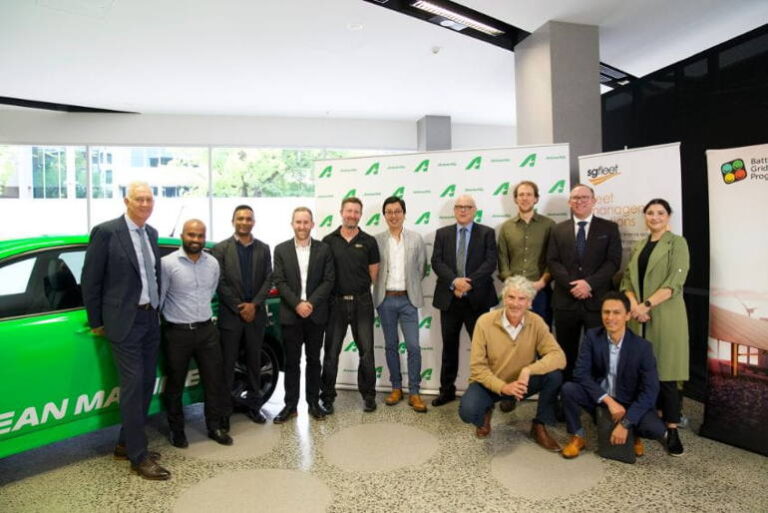Back in 2019 before everyone wanted an electric vehicle, a group of companies started working on a project in the ACT called REVS. The acronym means Realising Electric Vehicle-2-grid Services and was one of the first in the world to trial V2G on a large scale.
At the time, the only electric vehicle designed to handle V2G was the Nissan Leaf. So with $2.73 million in funding from ARENA, the ACT Government, Actew AGL, Evoenergy, Nissan, Australian National University, SG Fleet and Jet Charge started the project in 2020 involving 51 vehicles feeding electricity from their batteries back into the grid.
The project wrapped up earlier this year so I spoke to Ben Warren, National Manager Electrification and Mobility at Nissan, to get an update and find out if V2G is the future of renewable energy in Australia.
“The REVS project kicked off back in 2020, believe it or not, I think we started talking about it way back in 2019, but 2020 is when it officially kicked off. So that was a program that was funded, or partially funded, and supported by ARENA through the advancing renewables program,” explains Warren. “REVS was interesting because it was the first project of its kind in Australia.”
“There’s been various different projects around the world that have tackled bits and pieces of what we did. Ours was specific in that we were looking at some very specific use cases as part of REVS. So we were looking at grid services, as opposed to a lot of the other programs around the world that took a more of a vehicle to home, private consumer lens, or building lens, as opposed to frequency support and different services. All trying to do similar things ultimately which is use electric vehicles to support the owner’s energy requirements, but also then the grid as well.”
“It was good in that fact that, as I said, an Australian first, some aspects of it were really a global first. And the scale; 51 cars is not small. It was also significant because we had all of the different players across energy, vehicle and fleet and charging ecosystems. And so we had almost every stakeholder directly at the table as part of the project consortium group.”
“It was really interesting, because this thing took a long time to roll out and get going. A lot of the knowledge sharing reports talk to the learnings and the things that we uncovered along the way. But doing something new is difficult. It’s not a straight line path. I think having the collective minds of these different organisations at the table was one of the reasons that I think, personally, that REVS was able to actually get these chargers in and happening, and get it cracking.”
“I think what we learned was when you’re trying to do something new, there’s no instruction book, there’s no rulebook. It was not a straight path. It took a lot of effort, and a lot of thinking, and a lot of adapting to be able to do this.”
“And so I guess, as part of his project, what we really learned is probably two things. The first one, is there an opportunity for vehicle to grid in the future? I think category categorically yes. So what we learned is, the system can work. It can add benefit. And so there’s a huge amount of opportunity having all of these batteries on wheels that are parked a lot of the time; they can contribute quite strongly in a decarbonised energy market. With intermittent renewables, and all these things, all of a sudden, batteries become a hell of a lot more important. So can it do good? Yes. I think that’s categorically yes.”
“The other thing that we learned was, is the environment ready for it? Sort of, is the answer to that. One of the many things we learnt along the way is, for vehicle-to- grid to play a much bigger role in the market, it’s pretty clear that there are existing standards and existing processes that are set for very good reasons in the energy market, and have evolved with solar particularly over time, aren’t an exact fit for a technology like vehicle-to- grid.”
While securing required approvals nationally for V2G continues to be a work in progress, people living in South Australia can now apply to SAPN to install a Wallbox Quasar V2G units in the same way they otherwise would for a new home solar or battery installation. JET Charge started taking orders for the specialty chargers from South Australian customers in 2023.
ActewAGL Group Manager Energy Transition Products, Todd Eagles said at the conclusion of the project, “We’ve proven that EVs have a significant purpose beyond transport, to provide critical energy services to the grid.”
“This is a huge development, and means EVs can now be used to help solve a broader range of energy challenges, while still achieving the original purpose of transportation. By using V2G technology, EVs will play a critical role in decarbonising transport and providing support to the broader energy ecosystem as we transition towards net zero emissions.”
“REVS has us on our way to developing world-class V2G services in Australia, providing the opportunity to add V2G into the mix as one of the many key elements that will support the wider energy ecosystem as we increase the uptake of renewable energy,” he says.
Now the project has finished the ARENA website stated that REVS has demonstrated Vehicle-to-Grid (V2G) technology can provide support for the grid. In particular, it shows V2G can provide Frequency Control Ancillary Service (FCAS), which help maintain a steady frequency on the electricity grid.






